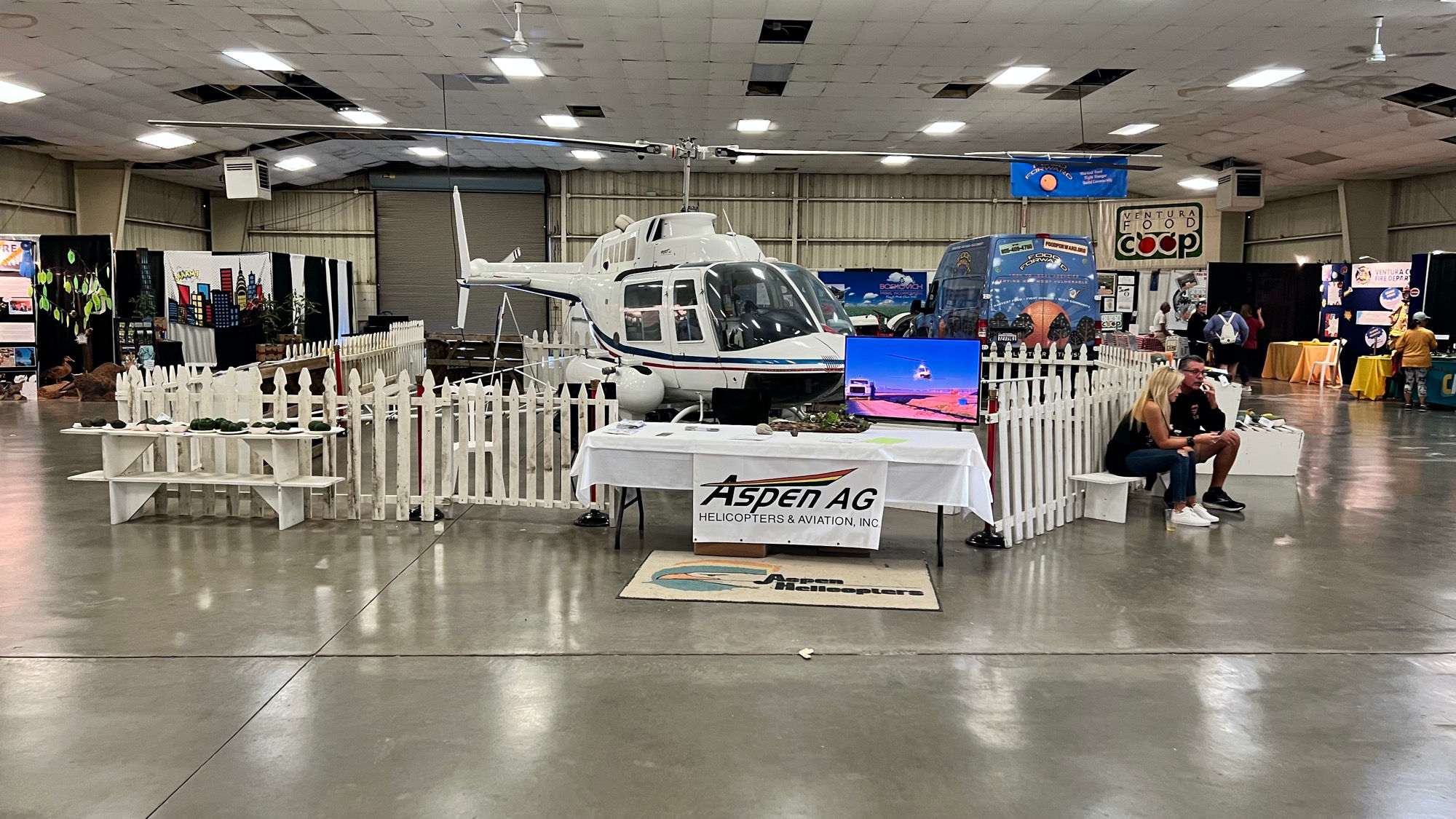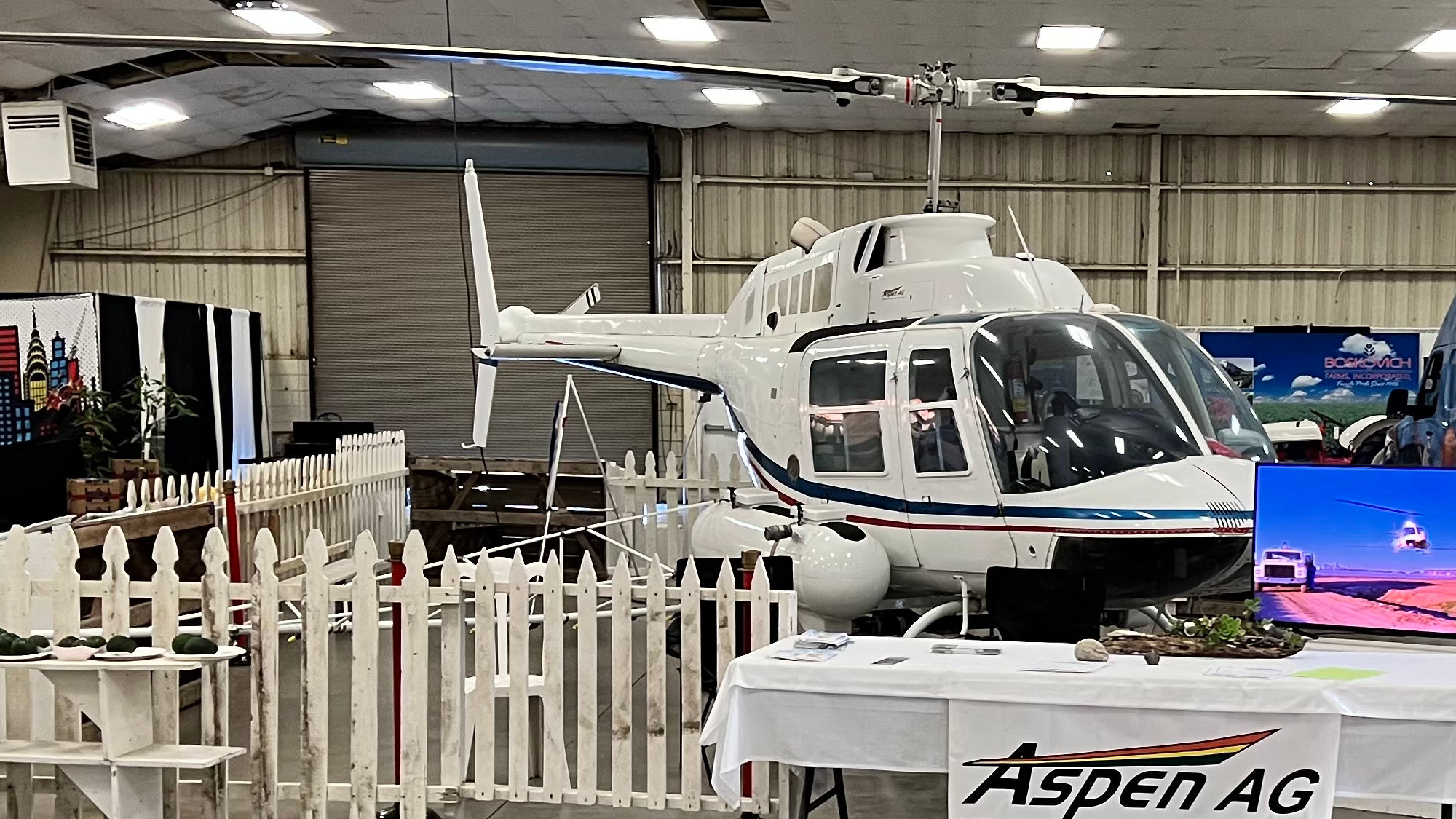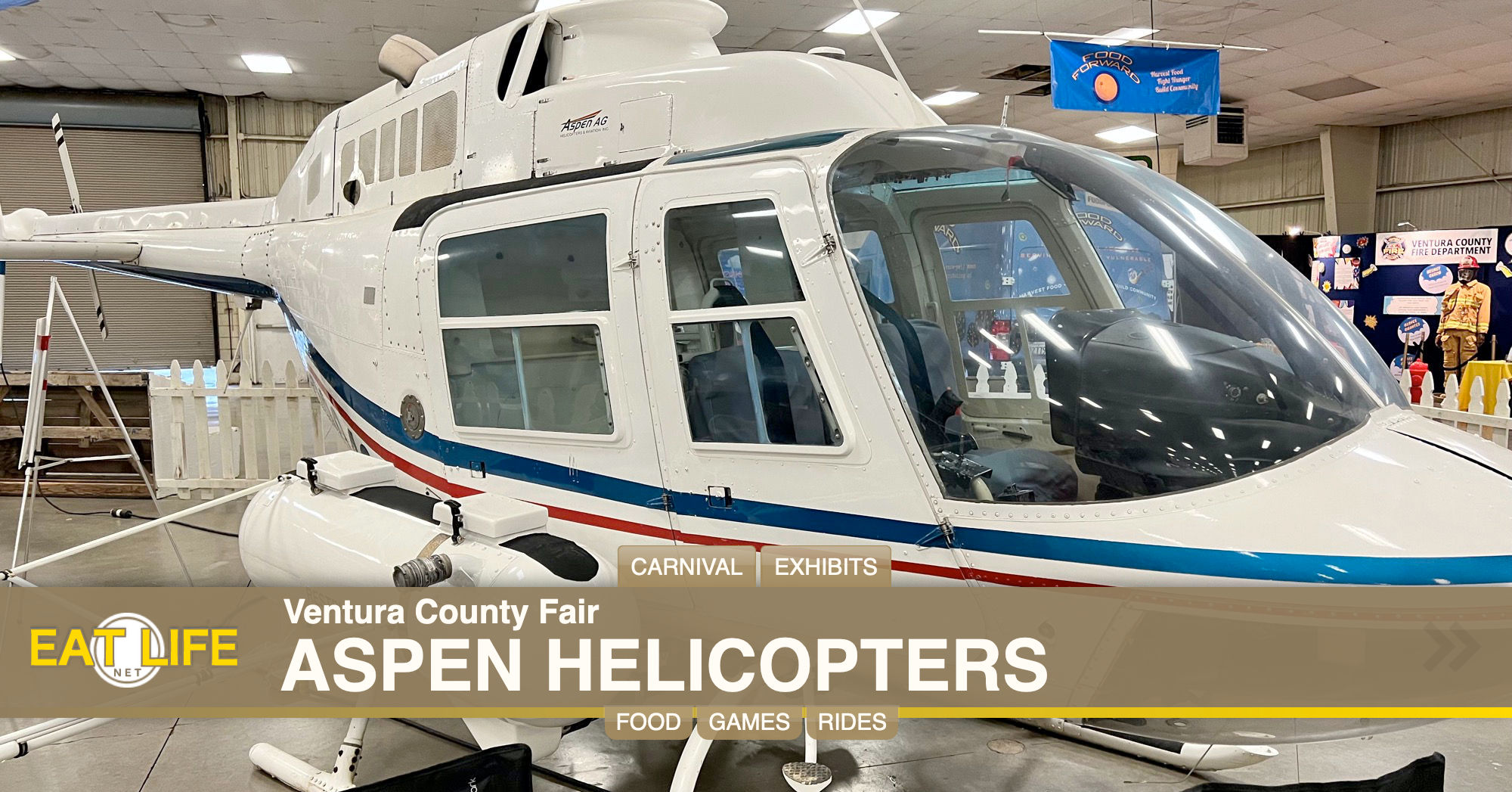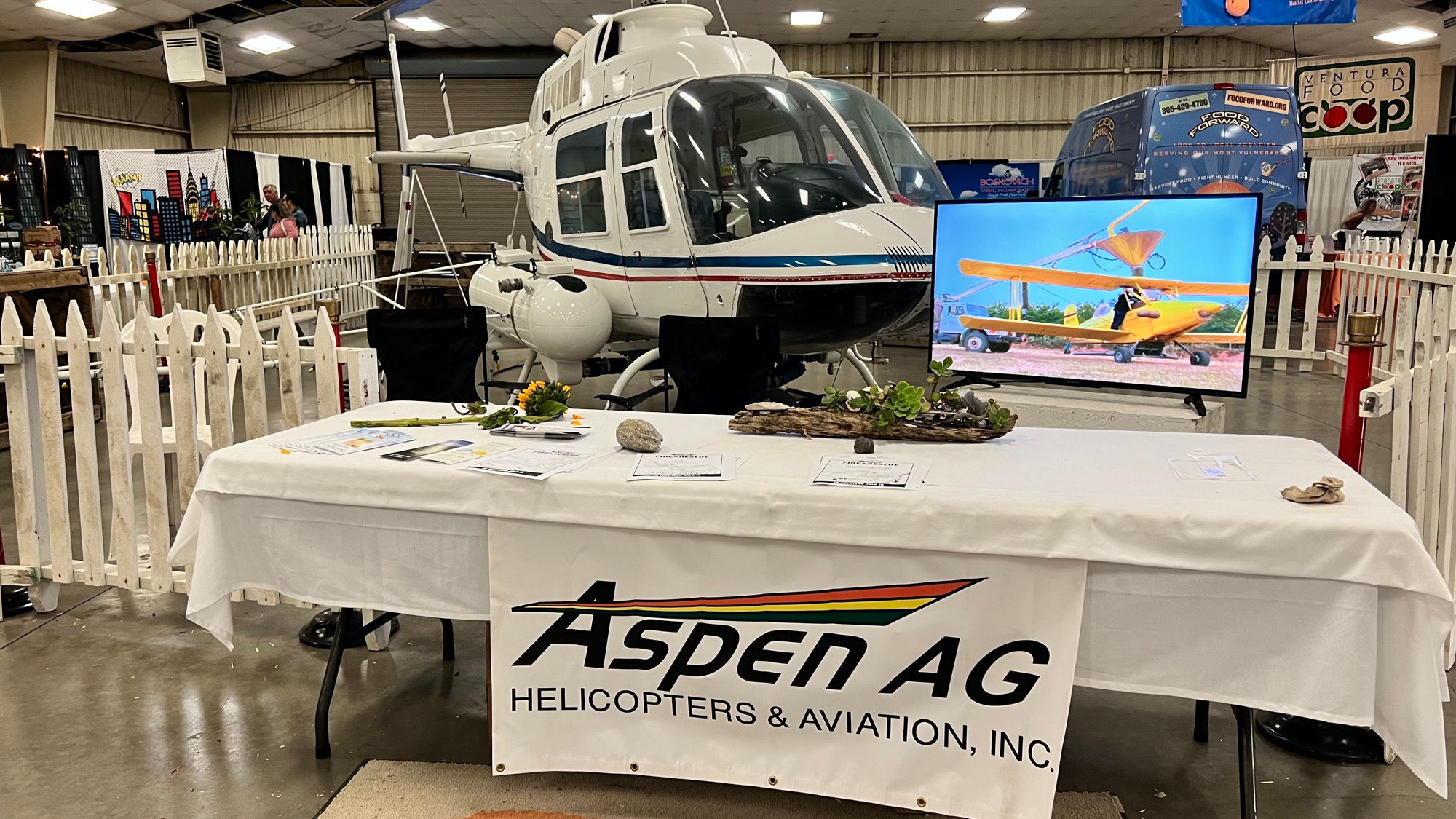
Serving the needs of Ventura County and beyond for four Decades
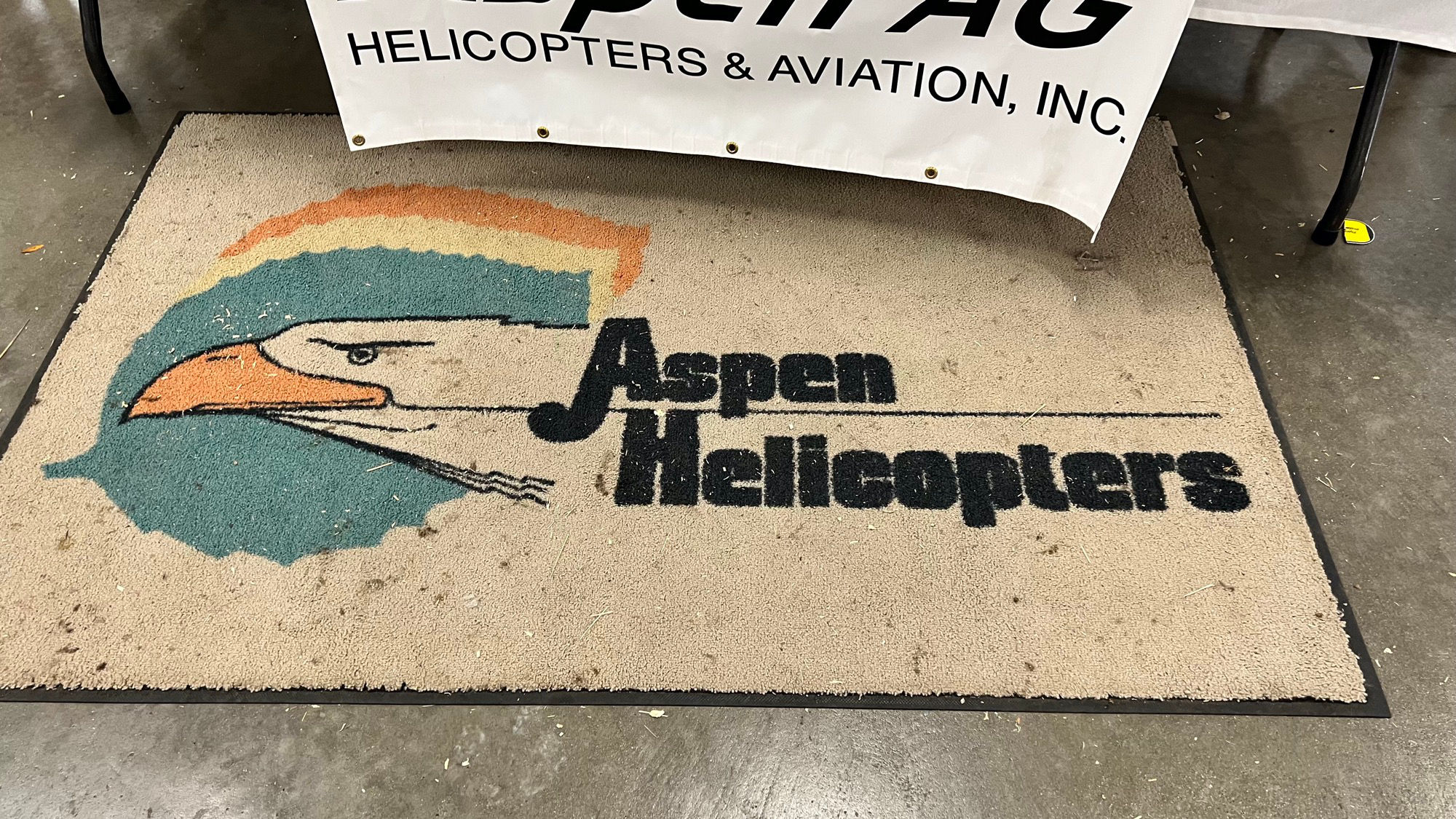
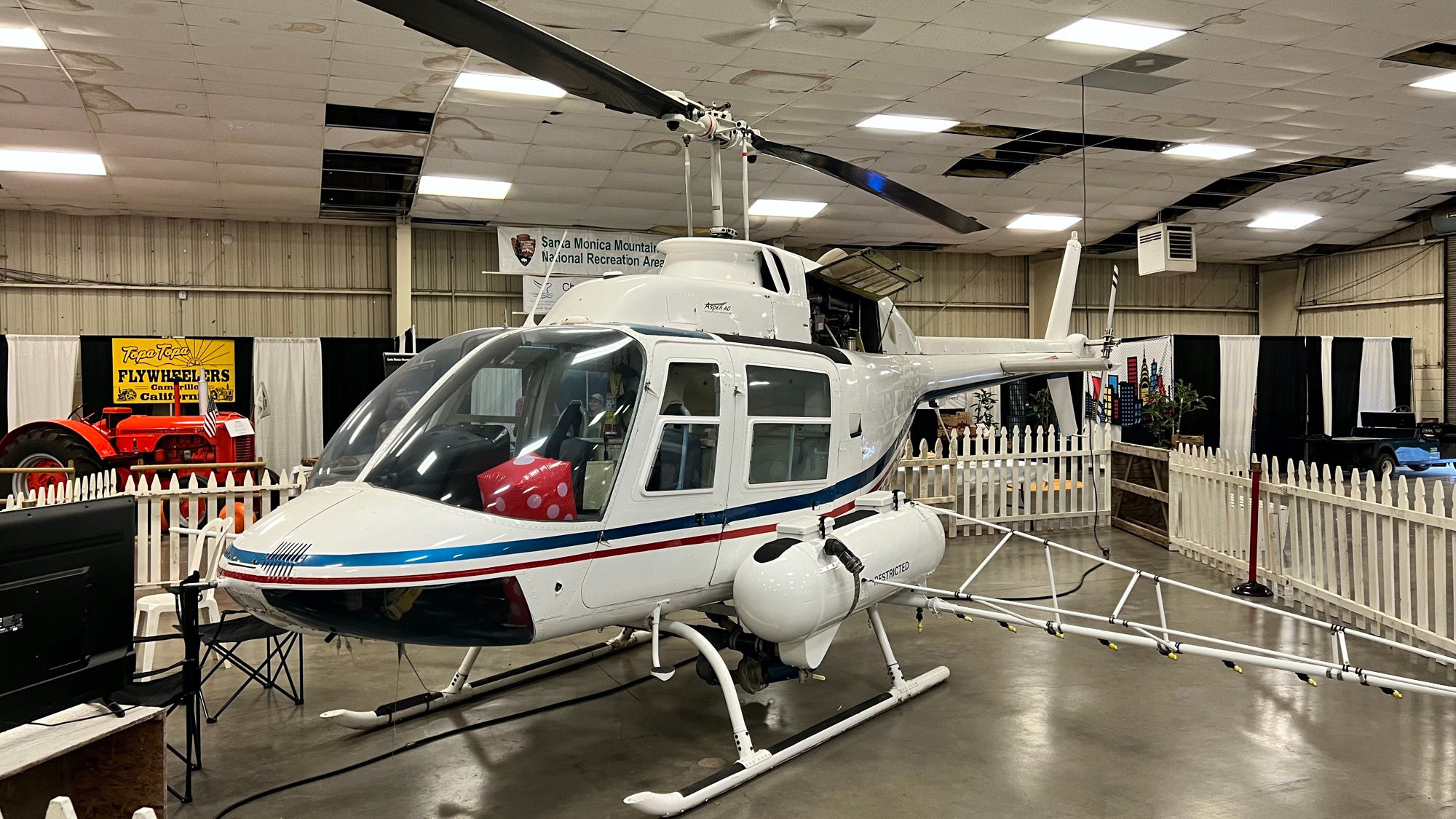
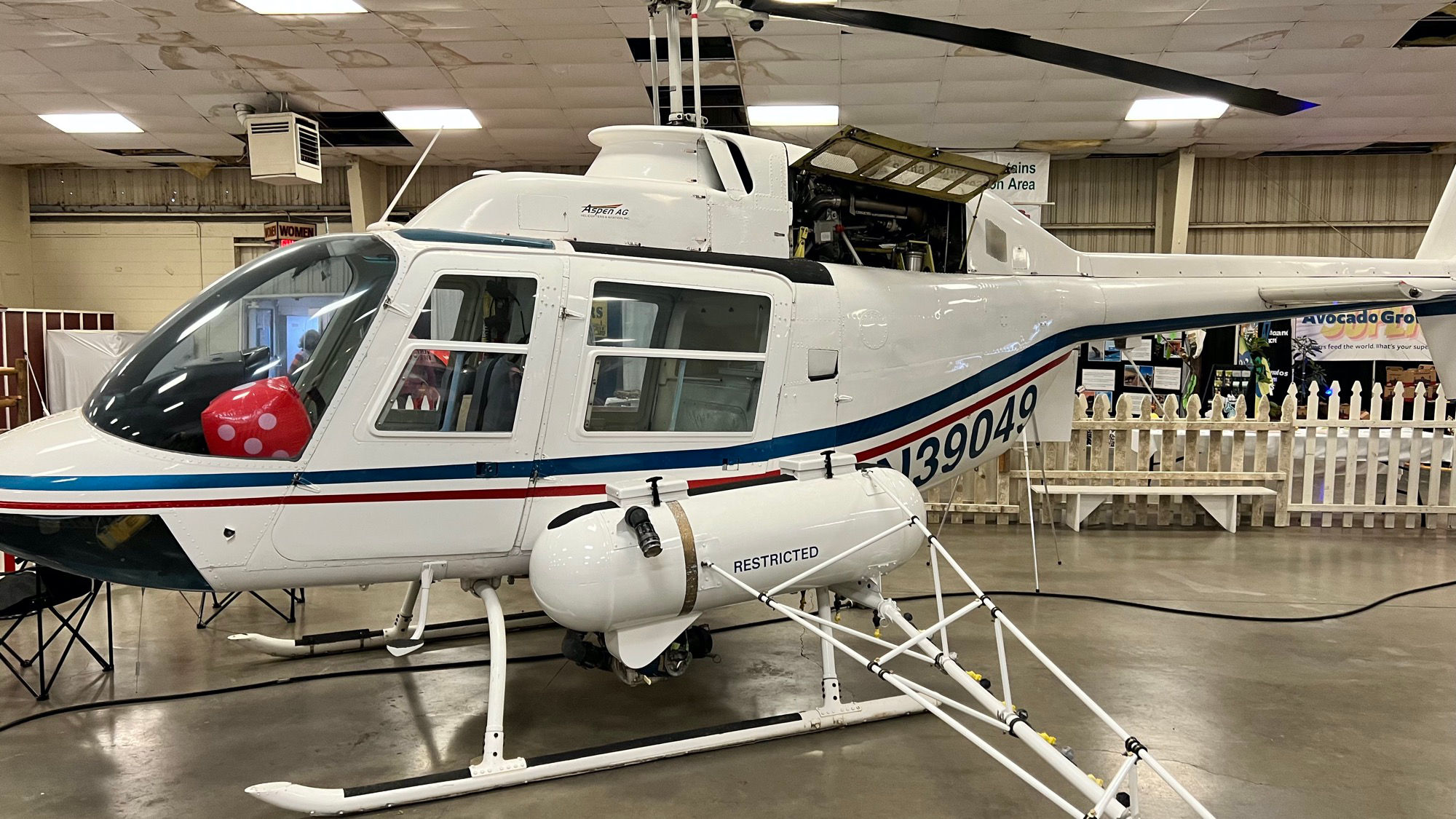
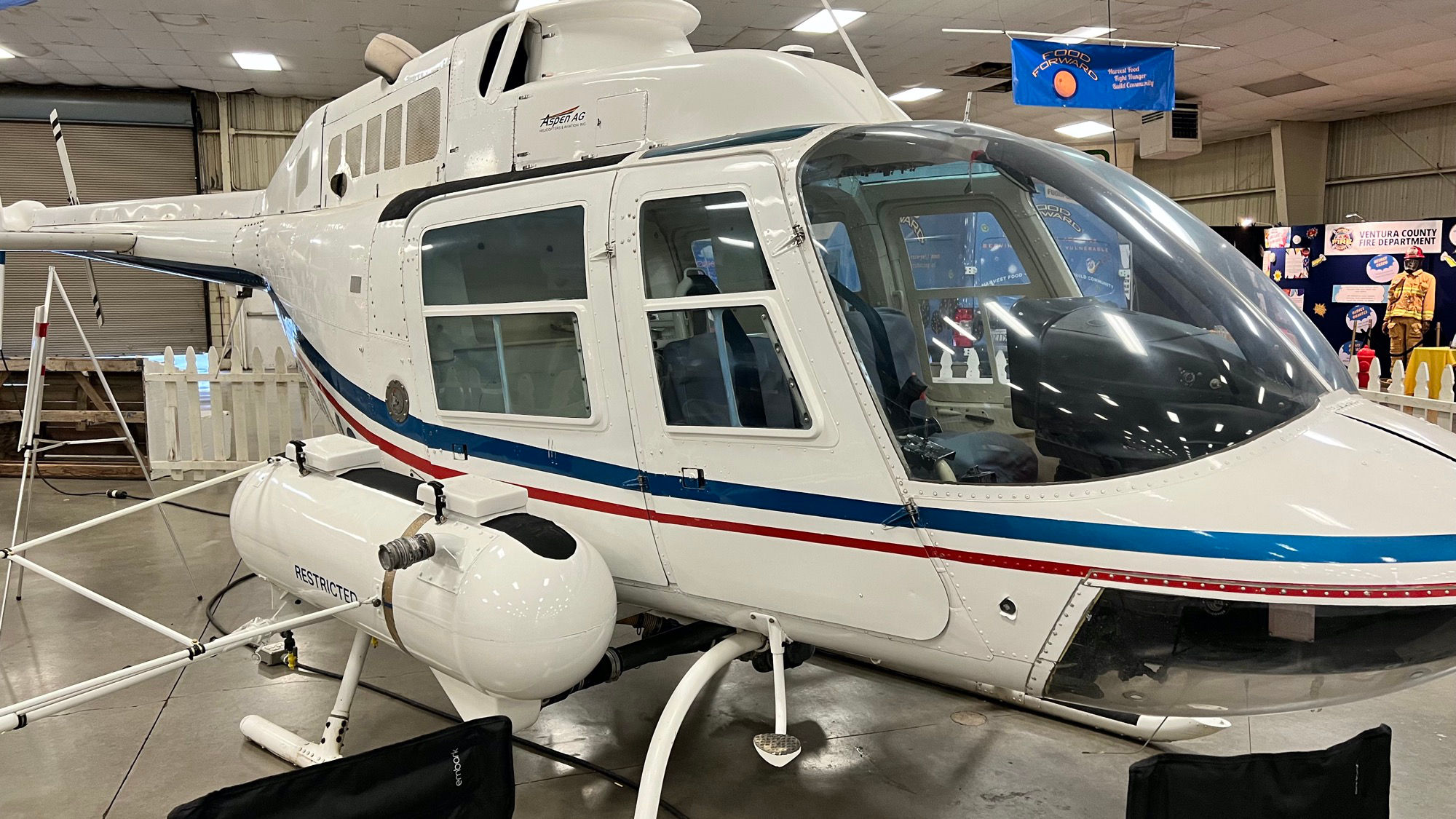
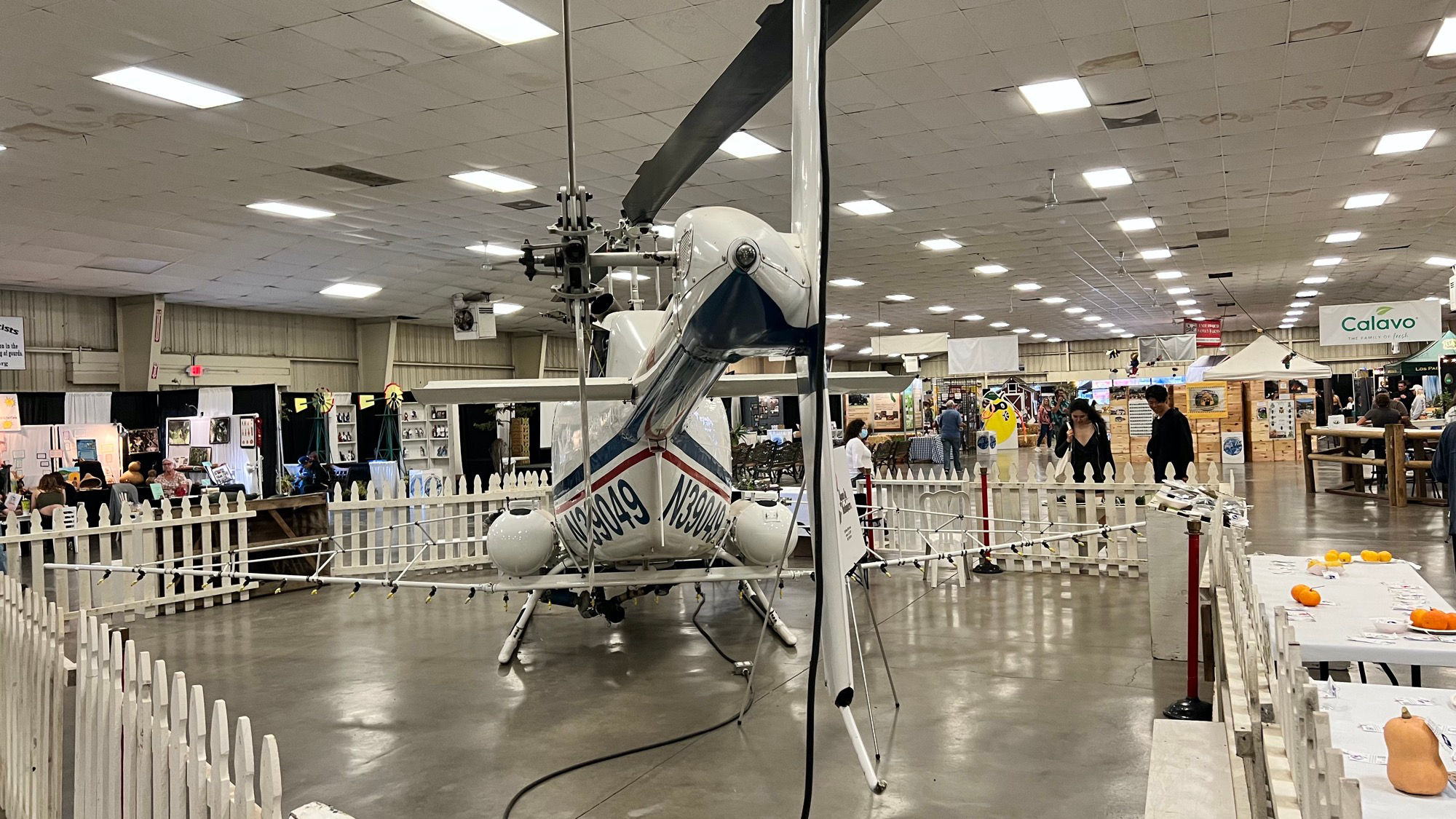
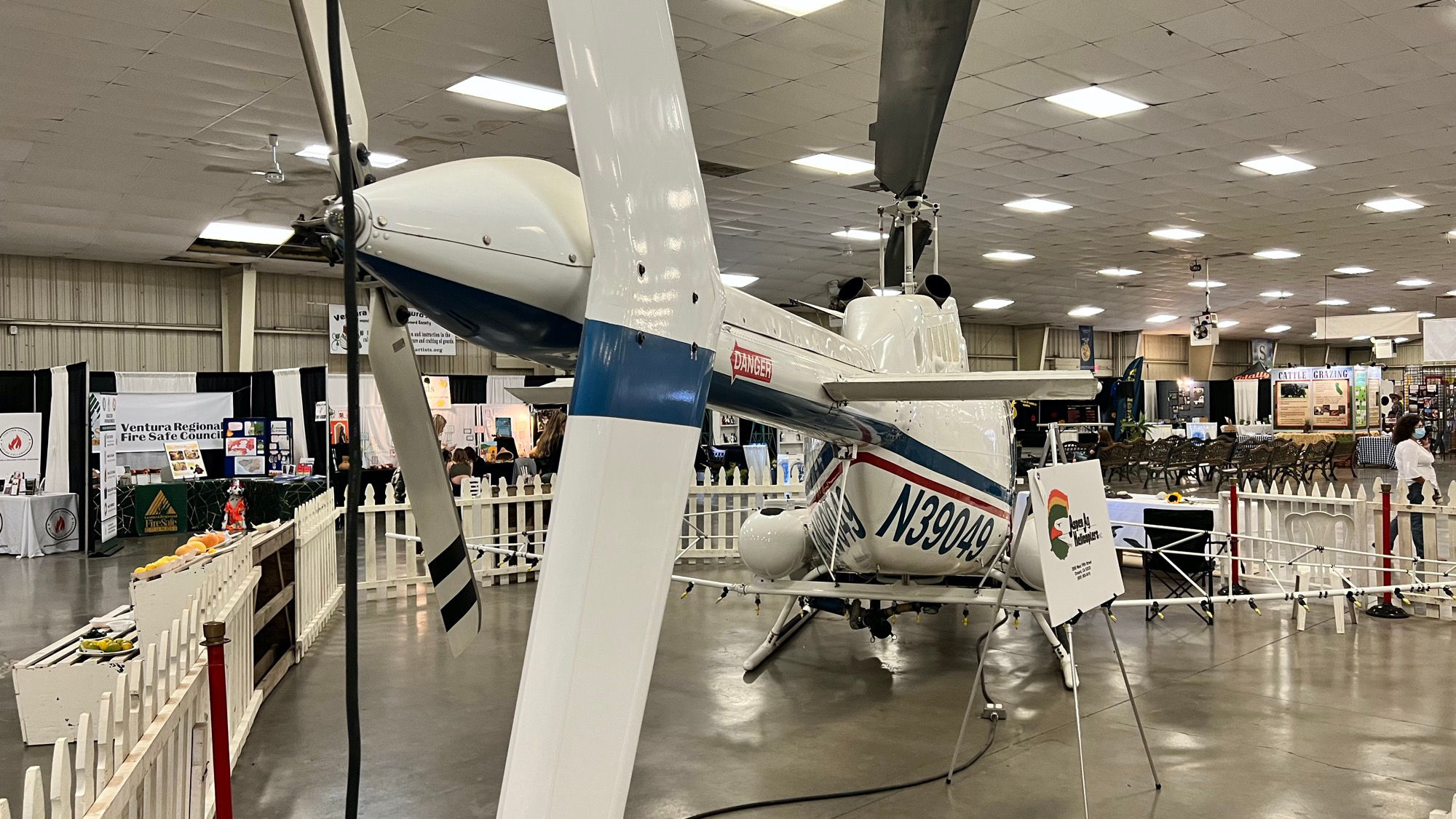
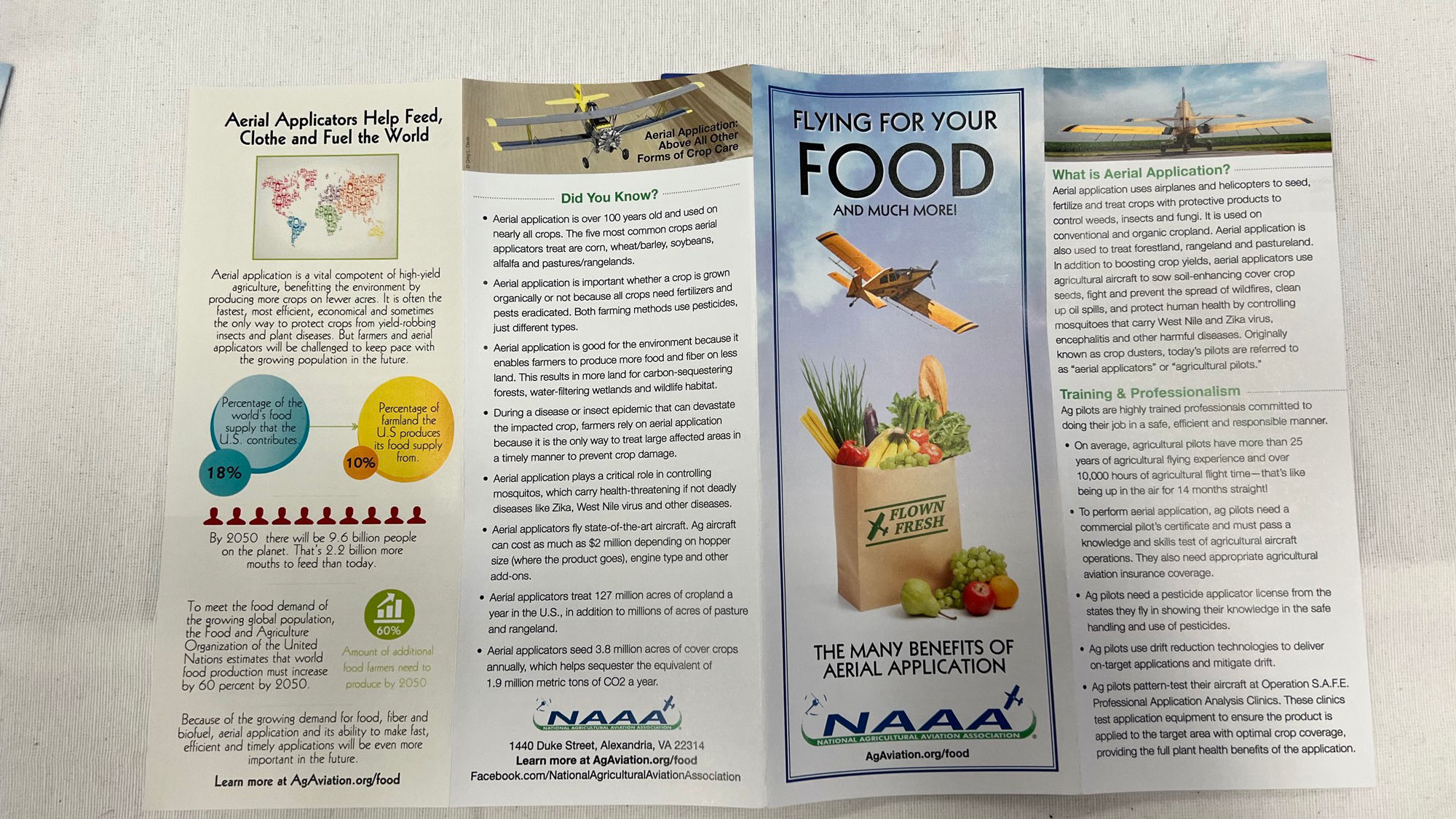
The Many Benefits of Aerial Application
What is Aerial Application?
Aerial application uses airplanes and helicopters to seed, fertilize and treat crops with protective products to control weeds, insects and fungi. It is used on conventional and organic cropland. Aerial application is also used to treat forestland, rangeland and pastureland. In addition to boosting crop yields, aerial applicators use agricultural aircraft to sow soil-enhancing cover crop seeds, fight and prevent the spread of wildfires, clean up oil spills, and protect human health by controlling mosquitoes that carry West Nile and Zika virus, encephalitis and other harmful diseases. Originally known as crop dusters, today's pilots are referred to as "aerial applicators" or "agricultural pilots."
Training & Professionalism
Ag pilots are highly trained professionals committed to doing their job in a safe, efficient and responsible manner.
- On average, agricultural pilots have more than 25 years of agricultural fiying experience and over 10,000 hours of agricultural flight time -that's like being up in the air for 14 months straight!
- To perform aerial application, ag pilots need a commercial pilot's certificate and must pass a knowledge and skills test of agricultural aircraft operations. They also need appropriate agricultural aviation insurance coverage.
- Ag pilots need a pesticide applicator license from the states they fly in showing their knowledge in the safe handling and use of pesticides.
- Ag pilots use drift reduction technologies to deliver on-target applications and mitigate drift.
- Ag pilots pattern-test their aircraft at Operation S.A.F.E. Professional Application Analysis Clinics. These clinics test application equipment to ensure the product is applied to the target area with optimal crop coverage, providing the full plant health benefits of the application.
Did You Know
- Aerial application is over 100 years old and used on nearly all crops. The five most common crops aerial applicators treat are corn, wheat/barley, soybeans, alfalfa and pastures / rangelands.
- Aerial application is important whether a crop is grown Organically or not because all crops need fertilizers and pests eradicated. Both farming methods use pesticides, just different types.
- Aerial application is good for the environment because it enables farmers to produce more food and fiber on less land. This results in more land for carbon-sequestering forests, water-filtering wetlands and wildlife habitat.
- During a disease or insect epidemic that can devastate the impacted crop, farmers rely on aerial application because it is the only way to treat large affected areas in a timely manner to prevent crop damage.
- Aerial application plays a critical role in controlling mosquitos, which carry health-threatening if not deadly diseases like Zika, West Nile virus and other diseases.
- Aerial applicators fly state-of-the-art aircraft. Ag aircraft can cost as much as $2 million depending on hopper size (where the product goes), engine type and other add-ons.
- Aerial applicators treat 127 million acres of cropland a year in the U.S., in addition to millions of acres of pasture and rangeland.
- Aerial applicators seed 3.8 million acres of cover crops annually, which helps sequester the equivalent of 1.9 million metric tons of CO2 a year.
Aerial Applicators Help Fee, Clothe and Fuel the World
Aerial application is a vital component of high-yield agriculture, benefiting the environment by producing more crops on fewer acres.
It is often the fastest most efficient, economical, and sometimes the only way to protect crops from yield-robbing insects and plant diseases. But farmers and aerial applicators will be challenged to keep pace with the growing population in the future.
- 18% Percentage of the world's food supply that the US Contributes
- 10% Percentage of farmland the US process its food supply from
- 2050 By 2050 there will be 9.6 billion people on the planet. That's 2.2 billion more mouths to feed than today
- 60%Amount of additional food farmers need to produce by 2050
To meet the food demand of the growing global population, the Food and Agriculture Organization of the United Nations estimates that world food production must increase by 60 percent by 2050.
Because of the growing demand for food, labor and biofuel, aerial application and its ability to make fast, efficient and timely applications will be even more important in the future.
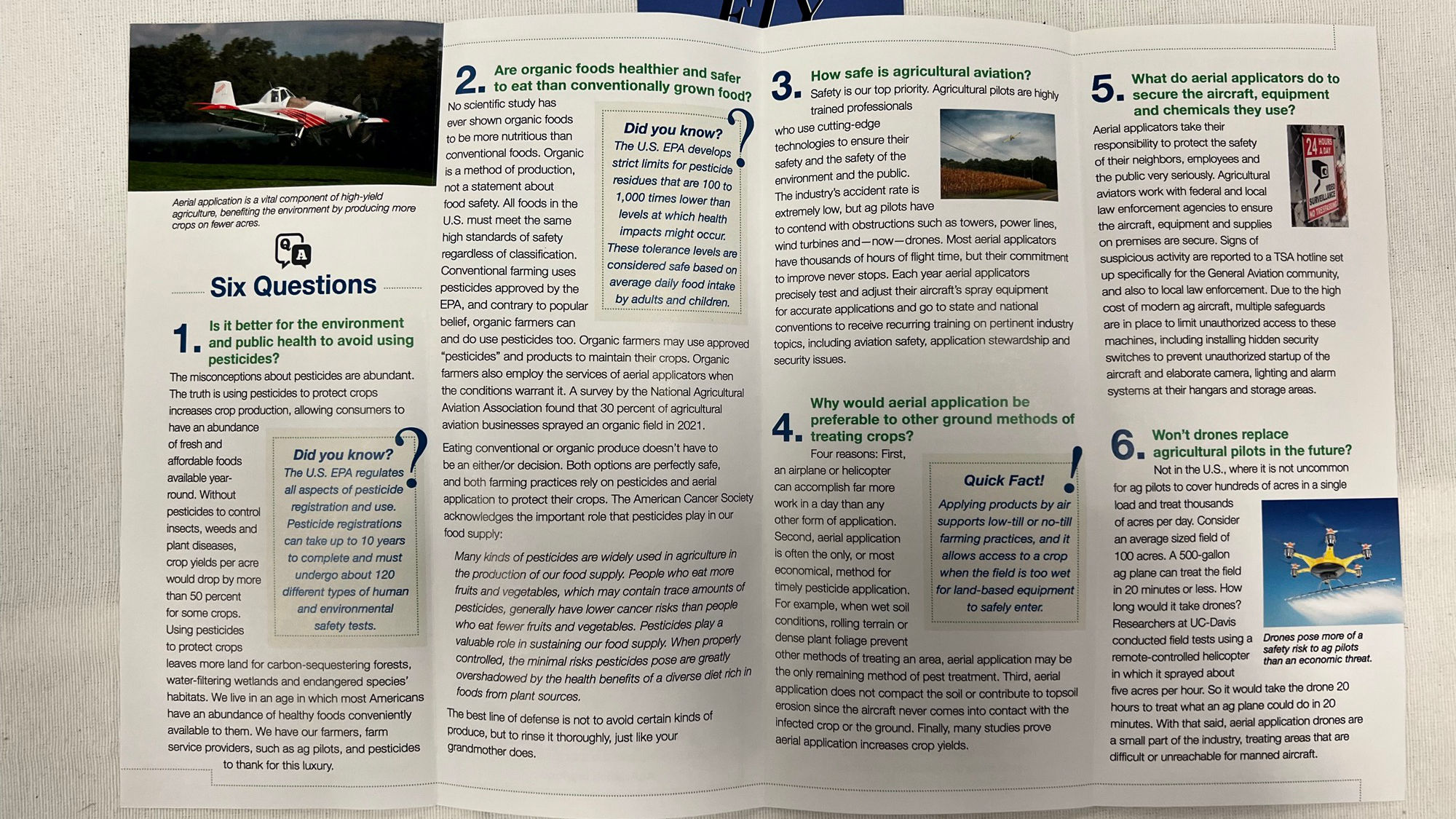
Aerial application is a vital component of high-yield agriculture, benefiting the environment by producing more crops on fewer acres.
- Is it better for the environment and public health to avoid using pesticides?
The misconceptions about pesticides are abundant. The truth is using pesticides to protect crops increases crop production, allowing consumers to have an abundance of fresh and have an abundance of fresh and affordable foods available year round.Did You Know
The U.S. EPA regulates all aspects of pesticide registration and use. Pesticide registrations can take up to 10 years to complete and must undergo about 120 different types of human and environmental safety tests.Without pesticides to control Insects, weeds and plant diseases, crop yields per acre would drop by more than 50 percent for some crops. Using pesticides to protect crops leaves more land for carbon-sequestering forests, water-filtering wetlands and endangered species' habitats. We live in an age in which most Americans have an abundance of health foods conveniently available to them. We have our farmers, farm service providers, such as ag pilots, and pesticides to thank for this luxury.
- Are organic foods healthier and safer to eat than conventionally grown food?
No scientific study has ever shown organic foods to be more nutritious than conventional foods.Did you know?
The U.S. EPA develops strict limits for pesticide residues that are 100 to 1.000 times lower than levels at which health Impacts might occur. These tolerance levels are considered safe based on average daily food intake by adults and children.Organic is a method of production, not a statement about food safety. All foods in the U.S. must meet the same high standards of safety regardless of classification. Conventional farming uses pesticides approved by the EPA, and contrary to popular belief, organic farmers can and do use pesticides too.
Organic farmers may use approved "pesticides" and products to maintain their crops. Organic farmers also employ the services of aerial applicators when the conditions warrant it. A survey by the National Agricultural Aviation Association found that 30 percent of agricultural aviation businesses sprayed an organic field in 2021. Eating conventional or organic produce doesn't have to be an either/or decision. Both options are perfectly safe, and both farming practices rely on pesticides and aerial application to protect their crops. The American Cancer Society acknowledges the important role that pesticides play in our food supply:
Many kinds of pesticides are widely used in agriculture in the production of our food supply,. People who eat more fruits and vegetables, which may contain trace amounts of pesticides, generally have lower cancer risks than people who eat fewer fruits and vegetables. Pesticides play a valuable role in sustalning our food supply. When properly controlled, the minimal risks pesticides pose are greatly overshadowed by the health benefits of a diverse diet rich in foods from plant sources.
The best line of defense is not to avold certain kinds of Produce, but to rinse it thoroughly, just lIke your grandmother does.
- How safe is agricultural aviation?
Safety is our top priority, Agricultural pilots are highty trained professionals who use cutting-edge technologies to ensure their safety and the safety of the environment and the public. The industry's accident rate is extremely low, but ag pilots have to contend with obstructions such as towers, power lines, wind turbines and -now -drones. Most aerial applicators have thousands of hours of flight time, but their commitment to improve never stops. Each year aerial applicators precisely test and adjust their aircraft's spray equipment for accurate applications and go to state and national conventions to receive recurring training on pertinent industry topics, Including aviation safety, application stewardship and security issues. - Why would aerial application be
preferable to other ground methods of treating crops?
Four reasons: First. plane or helicopter accomplish far more in a day than any other form of application.
Second, aerial application is often the only, or most economical, method for timely pesticide application. For example, when wet soil conditions, rolling terrain or dense plant foliage prevent other methods of treating an area, aerial application may be the only remaining method of pest treatment.
Third, aerial application does not compact the soil or contribute to topsoil erosion since the aircraft never comes into contact with the infected crop or the ground.
Finally, many studies prove aerial application increases crop yields.Quick Fact!
Applying products by air supports low-till or no-till farming practices, and it allows access to a crop when the field is too wet for land-based equipment to safely enter. - What do aerial applicators do to secure the aircraft, equipment and chemicals they use?
Aerial applicators take their responsibility to protect the safety of their neighbors, employees and the public very seriously. Agricultural aviators work with federal and local law enforcement agencies to ensure the aircraft, equipment and supplies on premises are secure. Signs of suspicious activity are reported to a TSA hotline set up specifically for the General Aviation community, and also to local law enforcement.Due to the high cost of modern ag aircraft, multiple safeguards are in place to limit unauthorized access to these machines, including installing hidden security switches to prevent unauthorized startup of the aircraft and elaborate camera, lighting and alarm systems at their hangars and storage areas.
- Won't drones replace agricultural pilots in the future?
Not in the U.S., where it is not uncommon for ag pilots to cover hundreds of acres in a single load and treat thousands of acres per day. Consider an average sized field of 100 acres. A 500-gallon ag plane can treat the field in 20 minutes or less.How long would it take drones? Researchers at UC-Davis conducted field tests using a remote-controlled helicopter in which it sprayed about five acres per hour. So it would take the drone 20 hours to treat what an ag plane could do in 20 minutes. With that sald, aerial application drones are a small part of the industry, treating areas that are difficult or unreachable for manned aircraft.
Drones pose more of a safety risk to ag pilots than an economic threat.
Aspen Helicopters:
We’ve been providing quality helicopter charter services for forty years, in a variety of models. All of our helicopters are maintained to the highest industry standards and come equipped with the most current and up-to-date safety gear, including automated GPS tracking systems.
Aspen Helicopters operates out of two locations on the Oxnard AirportAgricultural Services
We’ve been providing California with a variety of agricultural services for forty years.
- Liquid Aerial Application
- Dry Aerial Application
Aspen AGFrom aerial surveys, to executive charter, fire control, external load, and agriculture experience, Aspen has a variety of airplanes and helicopters available to meet just about any aviation request.
